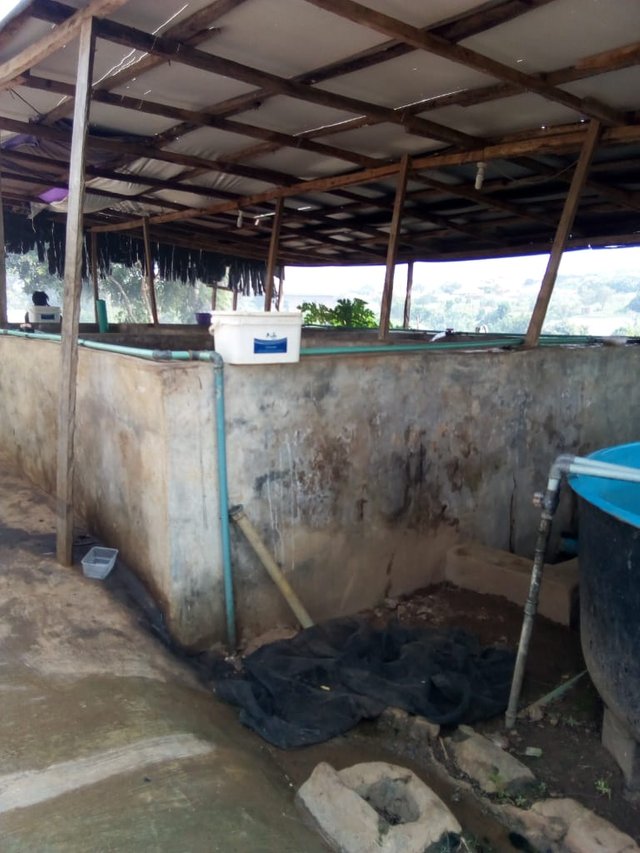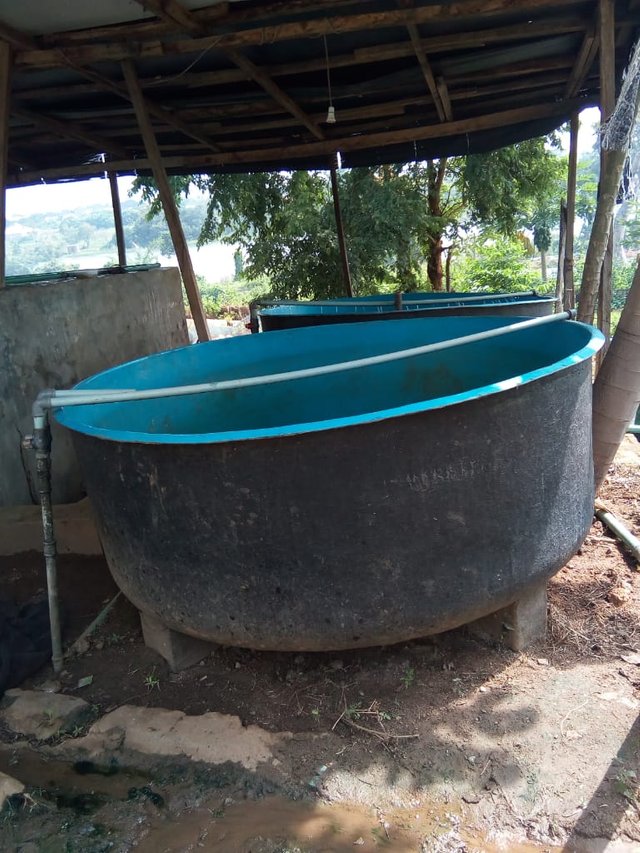Aquaculture is a relatively new branch of agriculture, although it has been practiced in the far east like China, Japan, etc for a long time. It has only become a widespread to the rest of the world in the late 40"s.
Aquaculture is the farming of aquatic organisms including fish, molluscs, crustaceans, aquatic plants, etc.
Fish culture is an aspect of aquaculture and is defined as the rearing or breading of fish in a controlled or controllable watered environment. Fish farming has several advantages over other agricultural production measures.
The aim of fish culture is to always achieve the highest possible fish production in any given circumstances and in the most economic way.
Advantages of fish culture over agriculture
- Protein it produce is generally more economical obtained than that of agriculture
- Animal protein produced in fish ponds may exceed the production from agriculture
- Animal protein may be produced in ponds cheaply and in large quantities which is important to a national economy.
- Low production cost
Fish is important because it contains proteins(body building food), vitamins, minerals, salts, fats and carbohydrates. Fish is a first class protein as is globally classified for its sterling quality in terms of amino acids. It contains two essential amino acids that are needed by the body for growth and repairs of worn out tissues. It is known that fish accounts for 40% protein in Nigeria diets(Anachie, 1974)

A fish pond is an enclosed area for rearing of fish. It can be INTENSIVE FISH FARMING where the farmer takes total control of the system management by giving the farm full attention of intensive feeding and management control to achieve best result and yield from the farm while EXTENSIVE FISH FARMING where the farmer give little or no attention to the farm leaving the fish to feed on their own and the farmer expects little or no return from the farm.
We also have SEMI-INTENSIVE FISH FARMING where the farmer provide artificial feed in small quantity to the fish and the fish surf for the rest on their own.
TYPES OF FISH POND

Earthen fish pond: They are dug out ponds from land(soil) and are of various types. Factors to be considered before its construction are visual survey, soil types, topography of the area, source of water supply etc.
CONCRETE POND: They are constructed with blocks and concrete according to various types, they can be rectangular, circular and are of various sizes. They are fitted with water pipes to serve as inlet and outlet water supplies. It can be constructed in any location provided it is environmentally friendly.
PLASTIC/POLYMER POND: Are of the same principle with concrete ponds, they are of different sizes and shapes.
FIBERGLASS: Are more expensive but similar use with those of concrete and plastic.
WOODEN TYPES: They are made of woods and in different sizes and shapes. The inner walls are lined with rubber to prevent water leakages and are of similar use with other types of ponds.
Other types include: Pen culture, Cage culture etc
TYPES OF FISH CULTURE
MONOCULTURE: This is the rearing or culturing of one fish specie in a rearing facility.
POLYCULTURE: This is the rearing or culturing of more than one fish specie in a rearing facility in the same or different combination ratio of fish specie
MONOSEX CULTURE: This is the rearing of same sex fish specie.
MONO SIZE STOCKING: Is the stocking of only one fish specie that are of the same size in a rearing facility. The fishes are stocked and harvested together when they reach marketable sizes.
INTEGRATED FISH FARMING
This is a type of farming where fish is integrated with crop cultivation or other livestock to create individual income and improve its water management. It is also a system of producing fish in combination with other agricultural/livestock farming operations centered around the fish pond.
Integrated fish cum rice: Here, fish species e.g Tilapia are cultivated alongside rice culture. It can also be called paddy farming by layman. The rice is usually planted in a swampy area. After the rice germinated the fish specie are being introduced into the water surrounding whereby the fish feed on the wedding and the water in turn moisturizer the rice seedlings. As the rice grows it also attract insect and the fish also feeds on it. It also servers as double source of income to the farmer.
Integrated fish cum poultry: This is a type of farming whereby a poultry is built on the pond so that the fish can feed directly on its droppings from the poultry.
Black soldier fly larvae produced from maggot can also serve as feed to the fish. The poultry and the fish serves as a double source of income to the farmer.
Advantages of Integrated fish culture
- More fish can be cultivates and produced place
- Creates many employment opportunities
- More profit from fish farming is possible
- Maximum fish production is possible
- It can be fully controlled by the farmer
- Artificial ecosystem with no waste water
Disadvantages are
- The system is very expensive.
This post has been voted on by the SteemSTEM curation team and voting trail. It is elligible for support from @curie.
If you appreciate the work we are doing, then consider supporting our witness stem.witness. Additional witness support to the curie witness would be appreciated as well.
For additional information please join us on the SteemSTEM discord and to get to know the rest of the community!
Please consider setting @steemstem as a beneficiary to your post to get a stronger support.
Please consider using the steemstem.io app to get a stronger support.
Downvoting a post can decrease pending rewards and make it less visible. Common reasons:
Submit
That's a great source of protein for Nigerians. I would hazard a guess that the remaining 60% must be from red meat as many really love it here.
Try and add up some references and welcome to stemng :)
Downvoting a post can decrease pending rewards and make it less visible. Common reasons:
Submit
Thank you. I will do that now.
Downvoting a post can decrease pending rewards and make it less visible. Common reasons:
Submit
Cool.
Downvoting a post can decrease pending rewards and make it less visible. Common reasons:
Submit
I have included the reference.
Downvoting a post can decrease pending rewards and make it less visible. Common reasons:
Submit
Ok. Seen. Thank you.
Downvoting a post can decrease pending rewards and make it less visible. Common reasons:
Submit
Congratulations @omotola5656! You have completed the following achievement on the Steem blockchain and have been rewarded with new badge(s) :
You can view your badges on your Steem Board and compare to others on the Steem Ranking
If you no longer want to receive notifications, reply to this comment with the word
STOPVote for @Steemitboard as a witness to get one more award and increased upvotes!
Downvoting a post can decrease pending rewards and make it less visible. Common reasons:
Submit
This is an improvement to some other practices - and I like the artificial ecosystem option in the last section the best - but it's definitely a big step down compared to wild-caught fish!
I eat wild-caught fish every single day, and one of the reasons (besides the inherent healthfulness of this type of meat) is that you can scarcely find any antibiotics-etc.-free meat anymore, and buying an organically raised chicken is quite expensive (a medium-sized responsibly raised chicken will cost ~8 euro; in comparison, 2 kilos of wild-caught chub mackerel - a fish that's very similar in its healthy oils to salmon - will cost 3 euro).
For people who can't hunt and aren't rich, fish is basically the only affordable wild-caught meat option remaining.
Downvoting a post can decrease pending rewards and make it less visible. Common reasons:
Submit
This is an improvement to some other practices - and I like the artificial ecosystem option in the last section the best - but it's definitely a big step down compared to wild-caught fish!
I eat wild-caught fish every single day, and one of the reasons (besides the inherent healthfulness of this type of meat) is that you can scarcely find any antibiotics-etc.-free meat anymore, and buying an organically raised chicken is quite expensive (a medium-sized responsibly raised chicken will cost ~8 euro; in comparison, 2 kilos of wild-caught chub mackerel - a fish that's very similar in its healthy oils to salmon - will cost 3 euro).
For people who can't hunt and aren't rich, fish is basically the only affordable wild-caught meat option remaining.
Downvoting a post can decrease pending rewards and make it less visible. Common reasons:
Submit